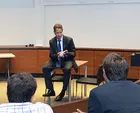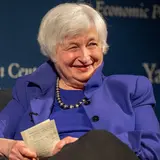
Ten Years Later: A Conversation with Timothy Geithner
When the investment bank Lehman Brothers failed in September 2008, in the biggest bankruptcy in U.S. history, it sent a shock through the already weakened financial system. Within a month the government had recapitalized American International Group, guaranteed money market mutual funds, and passed the $700 Troubled Asset Relief Fund (TARP), which permitted the government to invest capital into the country’s largest banks, forestalling their failure. The crisis would worsen throughout the next year spreading beyond the financial system and impacting almost every segment of the economy. Governments around the world would make unprecedented interventions to address it.
Lehman Brothers’ failure and the vulnerabilities of the large investment banks and other nonbank financial institutions were a major part of the 2007-09 financial crisis. Ten years after the crisis, the Federal Reserve’s decisions about how to respond to the potential failures of these institutions remain among the most controversial it made during the crisis.
Recently, Timothy F. Geithner, Former President of the Federal Reserve Bank of New York and Secretary of the Treasury during the crisis years sat down with Andrew Metrick, Janet Yellen Professor of Finance at the Yale School of Management and Founder and Director of the Yale Program on Financial Stability to revisit the unprecedented actions taken by the Federal Reserve and the government to calm the crisis and the recession.
The Yale Program on Financial Stability’s mission is to create, disseminate, and preserve knowledge about financial crises including understanding the decisions that policymakers make in deciding to intervene.



